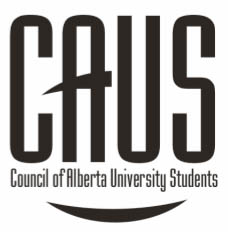 This week, the Alberta NDP government announced that they would be continuing the tuition and non-instructional fee freeze for domestic students to the 2019/2020 academic year, and that when tuition begins to rise again, it will be capped at the rate of CPI. Further, they’ve noted that this cap will be enshrined in legislation, not just regulation, meaning that any future government that seeks to change it must do so with public debate.
This week, the Alberta NDP government announced that they would be continuing the tuition and non-instructional fee freeze for domestic students to the 2019/2020 academic year, and that when tuition begins to rise again, it will be capped at the rate of CPI. Further, they’ve noted that this cap will be enshrined in legislation, not just regulation, meaning that any future government that seeks to change it must do so with public debate.
However, AUSU has some particular concerns over what this means for students who are not considered domestic, such as out of province or international students, since there is no regulation on the fees that post-secondary institutions can charge them. The Alberta government has somewhat addressed these concerns by noting that their revisions to the PSLA and regulation will include requirements that post-secondary institutions provide a tuition guarantee for international students for the standard length of their program, made at the time of their admission.
Further changes include that Mandatory Non-Instructional Fees will be capped at cost recovery, cannot be comprehensive (that is, must be for specific things) and that students must approve them. Also, while there is some flexibility for additional tuition increases in exceptional circumstances, these must also have the approval of the affected student body.
My own concerns are more about what happens when the tuition freeze is ended. So far, the NDP government has been making good on their promise to “backfill” post-secondary funding by the amount that tuition would have increased if post-secondary institutions had been allowed to raise tuition by the normal amounts. But that doesn’t necessarily mean that the “backfill” funding has been rolled into regular funding that universities receive. So what happens when the freeze ends? The legislation would seem to suggest that tuition could only be raised from the pre-freeze levels, but would the regular funding to the universities, including the “backfill”, be maintained?
As well, the current political polling does not look good for the NDP for the election in 2019 and the conservative parties in Alberta have a strong record of looking to post-secondary funding as one of the first places to cut when they want to cut spending. With tuition increases being tied to legislation, cutting funding to post-secondary could mean a significant curtailment of university operations, since not only could they not raise tuition or fees for domestic students to compensate, but, because of the requirement of a tuition guarantee, they also would not be able to increase tuition for international or out-of-province students already enrolled.
I’ll be seeking out responses from the government, university, and AUSU to try to bring a full report on these issues next week.
This week, however, the Voice Magazine is featuring an article on how to prevent burnout—something that I’m sure many AU students are all too familiar with. Plus, we’ve got some great, thoughtful articles, advice, interviews, a book review on the “first climate change epidemic”, scholarships, and more! Enjoy the read!


